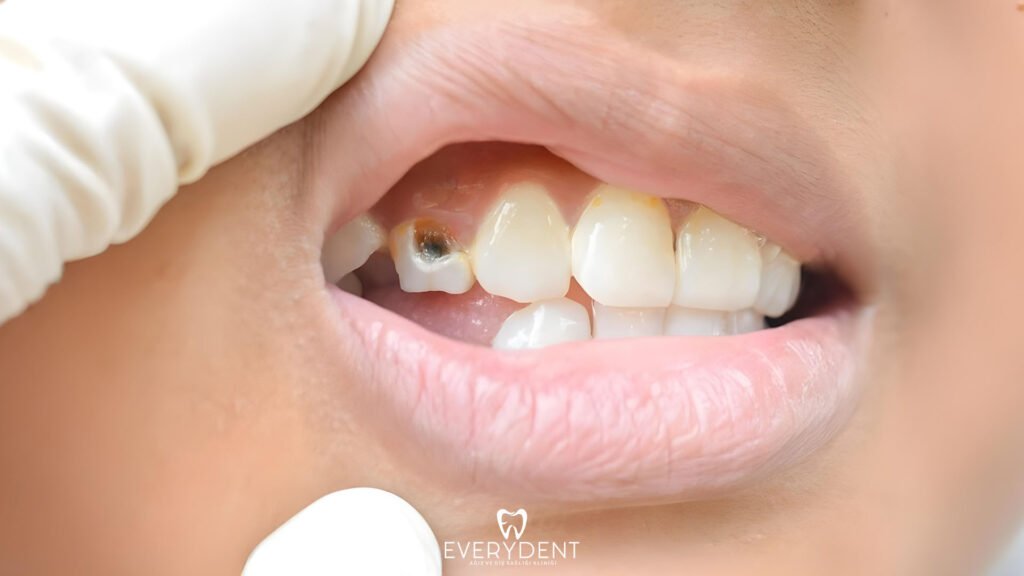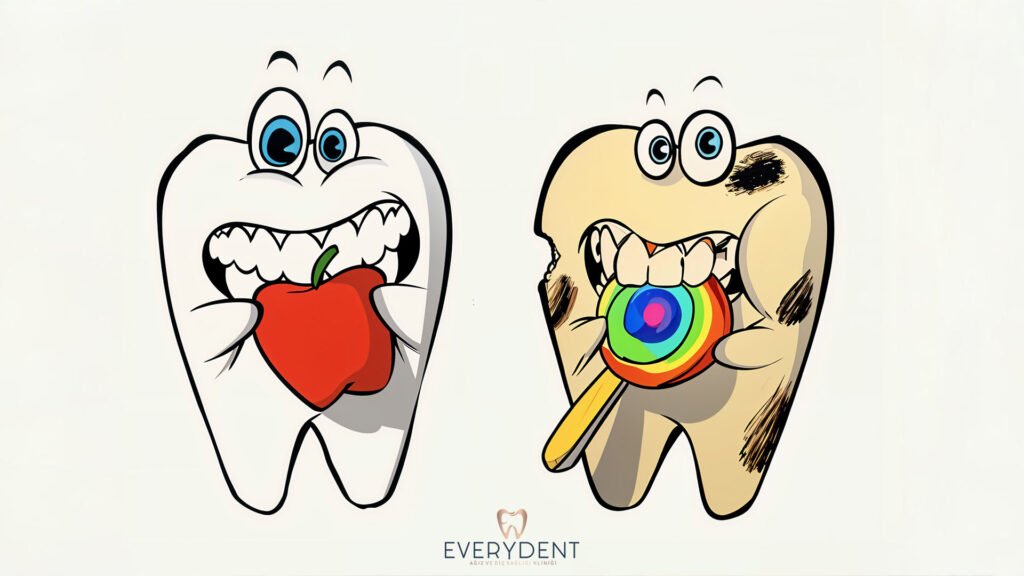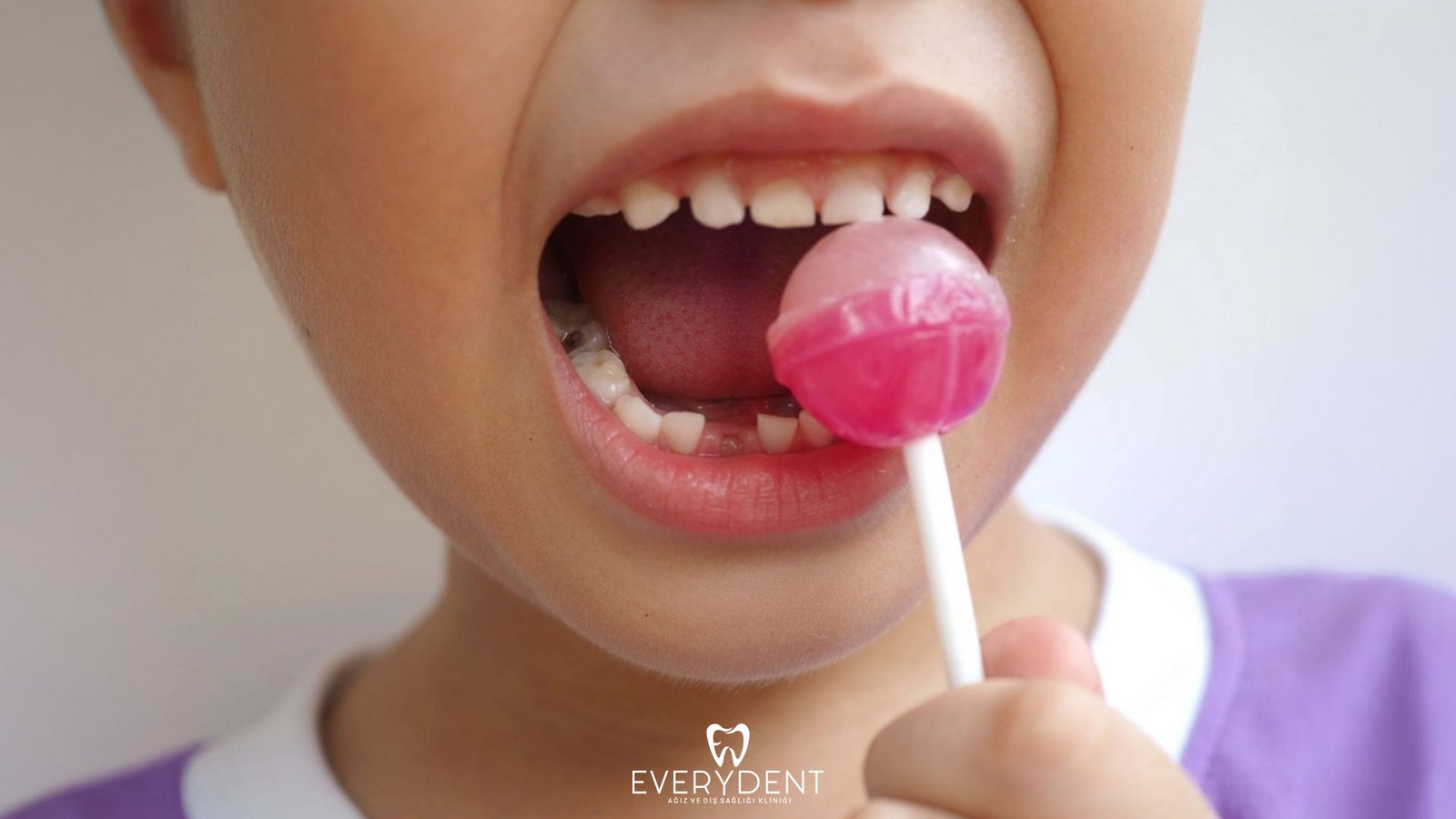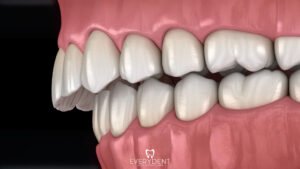Why Do Our Teeth Decay?
Tooth decay is one of the most common health problems affecting millions of people around the world. This problem, which can threaten individuals of all ages, can seriously affect not only oral and dental health, but also our general health. Caries is a problem that starts with damage to the tooth enamel and can reach the deeper tissues of the tooth in the future. Left untreated, it can lead to pain, tooth loss and infections.
In this article, we will discuss in depth what tooth decay is, why it occurs and how it can be prevented. We will also touch upon the effects of cavities on general health and the importance of early intervention. Increasing awareness of oral and dental health plays a critical role in preventing caries and living a healthy life. A healthy mouth is one of the cornerstones of a healthy body. Let’s examine this important issue in depth together.
What is Tooth Decay?
Tooth decay is a common oral health problem that occurs when the hard tissues on the tooth surface are damaged by bacteria and environmental factors. Caries usually occur when plaque accumulated in the mouth combines with sugary and starchy foods to produce acid. These acids can erode tooth enamel and damage more sensitive and vulnerable parts of the tooth over time.
The process of caries formation initially begins with a small discoloration or white spot on the tooth surface. This indicates that tooth enamel is losing minerals and starting to weaken. If no intervention is made at this stage, the decay will progress and reach the dentin layer under the tooth enamel. At this point, symptoms such as tooth sensitivity and pain may occur. In more advanced stages, decay can progress to the pulp layer of the tooth, where the nerve and vascular structures are located. In this case, the risk of severe pain, infection and even tooth loss increases.

What Causes Tooth Decay?
- Bacteria and Plaque Formation
Bacteria naturally found in our mouth convert sugar and carbohydrates in the food we eat into acids. These acids form a layer of plaque on the tooth surface. When plaque is not removed, it damages tooth enamel and decay begins. - Sugary and Acidic Foods
Sugary foods and drinks are the biggest triggers of tooth decay. Especially sticky candies and carbonated drinks remain on the tooth surface for a long time, causing enamel destruction and increasing the risk of caries. - Inadequate Oral Care
When we do not brush our teeth regularly, do not use dental floss, and skip dentist check-ups, we invite plaque accumulation and tooth decay. - Decreased Saliva Production
Saliva protects tooth enamel by neutralizing the acids in our mouth. However, stress, some medications and health problems can reduce saliva production, which paves the way for the formation of cavities. - Genetic Factors
Some people are genetically more prone to cavities. Factors such as the structure of tooth enamel, the amount of saliva and the alignment of the teeth can increase or decrease the risk of caries. - Age
Children and the elderly are more vulnerable to tooth decay. The formation of new teeth in children and receding gums in the elderly significantly affect this situation.
Symptoms of Tooth Decay
- Sensitivity in teeth
- Pain to sweet or hot-cold foods
- Visible holes or darkening in the teeth
- Bad breath
- Discomfort or pain while chewing
If any of these symptoms are noticed, you should consult a dentist as soon as possible.

How Do We Prevent Teeth Decay?
It is of great importance to acquire regular oral care habits to protect against tooth decay. Brushing your teeth using fluoride toothpaste at least twice a day, especially after meals, helps strengthen tooth enamel and prevent cavities. Cleaning the food residues accumulated between the teeth by using dental floss and supporting oral hygiene with antibacterial mouthwash are also effective methods to protect oral health.
You should pay attention to your diet and stay away from sugary and acidic foods as much as possible, and instead choose tooth-friendly foods such as dairy products, vegetables and whole grain products. In addition, visiting your dentist every 6 months for regular dental check-ups and detecting possible caries risks early will help you protect your dental health in the long term.
Drinking plenty of water or chewing sugar-free gum to support saliva production protects your teeth by neutralizing acids in the mouth, while consuming fluoridated water or using products containing fluoride is an effective method to strengthen tooth enamel. By making all these habits a part of your life, you can have a healthy smile that is free from tooth decay.
What is good for decayed toothache?
Caries toothache is an annoying condition that negatively affects the quality of life of many people. There are several effective methods to relieve this type of pain. First, gargling with salt water can both relieve pain and help reduce infection. You can gargle by adding a teaspoon of salt to a glass of warm water. Additionally, applying a cold compress can also relieve pain. To do this, you can wrap an ice bag in a thin cloth and apply it to the painful area for 15-20 minutes.
One of the natural methods is to use clove oil. Clove oil can reduce pain thanks to the antiseptic properties it contains. You can add a few drops of clove oil to a piece of cotton and apply it directly to the aching tooth. If you don’t have clove oil, you can get a similar effect by chewing a clove. It is also possible to use painkillers to control the pain, but it is important to use these medications in accordance with the recommendation of a dentist.

How to Treat Tooth Decay
If we can detect tooth decay at the beginning, we can easily treat it. At this stage, we protect the tooth by cleaning the area where the decay is located, removing the tissues that damage the tooth, and filling the gap with filling material. The filling both prevents the progression of decay and restores the functionality of the tooth. However, if the decay progresses and reaches the deeper layers of the tooth, especially the pulp part where the nerves and vessels are located, more advanced treatment methods may be required.
In these cases, root canal treatment comes into play. Root canal treatment involves cleaning damaged or infected nerve tissue, disinfecting the root canals, and then closing these cavities with filling material. Thanks to root canal treatment, the natural tooth can be preserved and the need for extraction can be eliminated. However, in cases where the decay is so advanced that saving the tooth is not possible, tooth extraction may be inevitable. Treatment options such as implants, bridges or prosthesis may be considered to replace the extracted tooth to compensate for tooth loss. In order to prevent these situations, you should keep your oral hygiene at maximum and do not skip your dentist check-ups.




